What a difference a little elevation makes.
Moving up to about 3200 ft elevation on day three of the WV New River Gorge Birding and Nature festival meant the mountain ridges were bare of leaves. With the blast of cold, it felt more like March than the end of April. But since I didn't get to prowl around in the woods with experts in March, this turned out to be a real treat for me.
Meet my first new warbler of the day, the Black-throated Blue. Heavenly. One of many new birds for me that left me with a deep feeling of satisfaction. When it comes to warblers, you can hear their song, see them flitting around in the tops of trees, find them in the field guide, see a wonderful photograph, but nothing compares to seeing these birds up close so you can really wrap your mind around how wonderful they are. I wish every body could have this experience.
Below, our guides, as we all wait in silence for a warbler song and watch for his arrival. And let me tell you, there is nothing as still or as quiet as a group of birders waiting for a warbler! Left, Will Hershberger; middle in dark jacket, Connie Toops; and far right in dark cap, Keith Richardson.
This was my first opportunity to meet Connie who is also very knowledgeable about plants. Discovering this was like waking-up a kid inside me, a clear invitation to ask "what's this" a thousand times. But Connie didn't seem to mind and I had the pleasure of enjoying her botanical expertise for three consecutive field days.
Above you see a Lousewort or Wood-Betony. Invariably, there is a fun folk tale to go with an amusing name like lousewort. People once believed that cattle would become infested with lice if they brushed against this plant. And doesn't that make you wonder what they believed about cattle who ate them?
A beautiful plant with delicate fern-like leaves and muted colors that nearly disappear into the leaves and mosses of the forest floor, these flowers are easy to overlook and I'm glad I didn't miss them.
.
Below, a Purple Wake-robin, also known as Stinking Willie or Stinking Benjamin. There is no mystery to this name, they smell bad.
And right before heading back to camp, we visited a wide spot in the road, a rural pasture land with showy apple trees in their most beautiful stage of bloom. Our reason for stopping, a nesting pair of Yellow Warblers. Below, the male gives us one last look before returning back to his nesting site.
And that was, in deed, one of those moments of satisfaction.
At this birding festival, "back to camp" doesn't signify the end of the day. There is a brief interlude for rest, if you grab it, before rejoining all your fellow birders for a delicious dinner and a presentation from one of our experts. This was also our opportunity to welcome fellow bloggers who recently joined the festival--people I felt like I already knew, whose faces and names I recognized, but whom I had never met in person before. And all I can say is, meeting them affirmed everything I knew with some fun additions. I now have a voice and a laugh and some mannerisms that bubble into my mind, making me smile while reading their blogs.
Above, left to right, Susan Kailholz-Williams of Susan Gets Native, Murr Brewster of Murrmurrs, and Nina Harfmann of Nature Remains (links provided below). At the end of day three, Smokey's Restaurant was our dinner meeting spot...
and we packed it with nature lovers!
To see all my posts on the New River Birding and Nature Festival click here.
Links and Resources:
Susan Kailholz-Williams--Susan Gets Native
Nina Harfmann--Nature Remains
Murr Brewster--Murrmurrs
Will Hershberger--The Music of Nature
Connie Toops--Lost Cove Farm
WV's New River Birding and Nature Festival
National Park Service, New River Gorge Website
Friday, May 28, 2010
Monday, May 24, 2010
A Day in WV's High Country--Part I
Day three of WV's New River Gorge Birding and Nature Festival (April 28th) began with frost covered windshields, plenty of warm clothing layers, and in my case, an expectant attitude, ready for whatever the day might bring. And that's the only attitude to have when you're headed for the bone-chilling winds of higher elevations. But with help from well-heated buses, paced stops and the camaraderie of new friends, the cold quickly took a back seat to new discoveries.
Bare tree limbs mean birds are easier to find and early flowers are just emerging. And if you've traveled from Tennessee, it's as though the calendar turned back in time with spring unfolding all over again.
These Red-winged blackbirds were no exception. A species few people get excited about, these birds didn't seem to notice our arrival, so involved were they in courtship displays. The males were hard at work singing and posturing while the less conspicuous females demurely responded with their own harmonizing vocals and feather ruffling. In the morning light the faded reeds enhanced the richness of these colorful festivities all the more, bringing habitat and behavior delightfully into focus. Just look at the impressive shoulder-patch display exhibited below!
This was our prelude to walking up what felt like the coldest hill on the planet to a field historically abundant with singing and nesting Bobolinks. But our star was conspicuously absent and our leaders speechless in the eerie early morning silence.
Our guides, Connie Toops, below center, and Kieth Richardson, above right, offered possible explanation but could only speculate on the bird's absence--a later, colder spring, or the aftermath of poisoning on wintering grounds. The last, a chilling consideration. (More details found in links at post's end.)
As luck would have it, we did see two distant Bobolinks after we descended the hill and snatched some quick looks through a scope (my first). I'm also happy to report that those who visited this area later in the week were rewarded with the arrival of more Bobolinks. Still, the reality of wide-spread extermination of a species has gripped me more than once lately.
Hunger and poverty are not to be ignored. So also, the survival of our world's wildlife. As we watch many species decline and earth's resources increasingly depleted, it is alarming that these urgent and complex problems don't have the unified attention of our world's most creative minds and leaders. In a century in which the human species considers itself so far advanced in the fields of science and technology, one has to ask, why not?
Next: High Country--Part II: Warblers and Botanicals
Painting: 9 x 12" watercolor on 75# Pastel tonal paper (pale pumpkin)
To see all my posts on the New River Birding and Nature Festival click here.
To see more about how I created this blackbird painting, visit "The Fun of Painting a Red-winged Blackbird" at Vickie's Sketchbook.
Related links:
Historical summary of Bobolink ecology and Cornell's Bobolink page.
WV's New River Birding and Nature Festival
Bare tree limbs mean birds are easier to find and early flowers are just emerging. And if you've traveled from Tennessee, it's as though the calendar turned back in time with spring unfolding all over again.
These Red-winged blackbirds were no exception. A species few people get excited about, these birds didn't seem to notice our arrival, so involved were they in courtship displays. The males were hard at work singing and posturing while the less conspicuous females demurely responded with their own harmonizing vocals and feather ruffling. In the morning light the faded reeds enhanced the richness of these colorful festivities all the more, bringing habitat and behavior delightfully into focus. Just look at the impressive shoulder-patch display exhibited below!
Our guides, Connie Toops, below center, and Kieth Richardson, above right, offered possible explanation but could only speculate on the bird's absence--a later, colder spring, or the aftermath of poisoning on wintering grounds. The last, a chilling consideration. (More details found in links at post's end.)
As luck would have it, we did see two distant Bobolinks after we descended the hill and snatched some quick looks through a scope (my first). I'm also happy to report that those who visited this area later in the week were rewarded with the arrival of more Bobolinks. Still, the reality of wide-spread extermination of a species has gripped me more than once lately.
Hunger and poverty are not to be ignored. So also, the survival of our world's wildlife. As we watch many species decline and earth's resources increasingly depleted, it is alarming that these urgent and complex problems don't have the unified attention of our world's most creative minds and leaders. In a century in which the human species considers itself so far advanced in the fields of science and technology, one has to ask, why not?
Next: High Country--Part II: Warblers and Botanicals
Painting: 9 x 12" watercolor on 75# Pastel tonal paper (pale pumpkin)
To see all my posts on the New River Birding and Nature Festival click here.
To see more about how I created this blackbird painting, visit "The Fun of Painting a Red-winged Blackbird" at Vickie's Sketchbook.
Related links:
Historical summary of Bobolink ecology and Cornell's Bobolink page.
WV's New River Birding and Nature Festival
National Park Service, New River Gorge Website
Linked to Bird Photography Weekly #91 at Birdfreak.com to promote the conservation of our world's birds.
Linked to Bird Photography Weekly #91 at Birdfreak.com to promote the conservation of our world's birds.
Tuesday, May 11, 2010
WV's Waterfalls and Warblers
Just before leaving for the New River Birding and Nature Festival, I hesitated, wondering what on earth I was doing. I'm going to see warblers, I thought. I'm going all the way to West Virginia to see tiny gray specks in the tops of trees.
Now, that I've returned, I'm marveling at how much I learned during that short week. New bird songs, for one thing, and imprinted images of new bird species. And each time I sit down to describe a day at the festival, I don't know where to begin. My mind churns with people, places and, of course, birds--not tiny gray specks of birds, but great looks at warblers, many of them singing on breeding territory.
My second day in the field began with a trip to Kanawha Falls, pictured below, near where the New and Gauley Rivers unite to form the Kanawha River. From there we traveled up to nearby mountain ridges.
It was along these ridges that our two expert guides handed us warbler after warbler. First it was a Cerulean landing in the top of a tree, cascading down the canopy limbs, lower and lower, until he was nearly at eye level. Then the brightly colored Hooded Warbler, pictured below, who posed long enough to allow great photos.
And below, the bird of the day, this sweet Swainson's, so quiet and still, perched deep in the shadows of the rhododendrons. All of these warblers were first-time species for me. All of them near enough, low enough that I could feel the satisfaction of recognition and even glimpse their behavior.
Below, at Cathedral Falls, you see our expert guides for the day, Paul Shaw (left) and Wil Hershberger, who enabled us to get these great looks, even allowing me to bring home a few reference photos for my sketchbook.
And below, meet Miss Susan-Kailholz Williams (left), sitting beside me. Susan, from Ohio, is nature blogger and "Flock" organizer extraordinaire. It was this lady's enthusiasm for the New River Festival and her arrangements for the Flock gathering, that enticed me to join the festival this year, providing a wonderful opportunity not only to bird with some of the best, but meet some extraordinarily talented people. More fun people and birds, coming up.
Related Links and resources:
WV's New River Birding and Nature Festival
National Park Service, New River Gorge Website
Susan Kailholz-Williams--Susan Gets Native
To see all my posts on the New River Birding and Nature Festival click here. To see more about how these sketchbook pages were created visit The Search for a Swainson's Warbler at Vickie's Sketchbook.
Friday, May 7, 2010
A Day at the Meadow with Experts
The more time you spend with nature, the deeper and richer your experience becomes. That's the quality of accumulating experience. Put yourself out there and your mind and body will absorb it. But add an expert to that experience and your world of discovery will enlarge in leaps.
Above: Common Blue Violet, one of many violet species enjoyed during the festival.
 This is one of the fun parts of attending a nature festival and a good description of my experience at The Meadows at Opossum Creek Retreat during the New River Birding and Nature Festival. I couldn't possibly remember everything I saw and heard on that day, but familiarity is the first step and I did store away a few enriching experiences to share with you.
This is one of the fun parts of attending a nature festival and a good description of my experience at The Meadows at Opossum Creek Retreat during the New River Birding and Nature Festival. I couldn't possibly remember everything I saw and heard on that day, but familiarity is the first step and I did store away a few enriching experiences to share with you.
My first delight of the day was learning a new bird song, the Ovenbird's "teacher, teacher, teacher". As many as three of these birds were singing in the area as we walked. Even though one of our hosts, Keith Richardson (right), had his scope handy, we did not see Ovenbirds on this day. As the days of the festival went by, I had more opportunity to practice recognition of this song. More about this bird later.
A blue-green lichen picked up from the ground, now has a name and an interesting function.

Lichen is actually formed by a symbiotic relationship between an alga and a fungus. This particular blue-green lichen is called Green Shield Lichen. The expert who called our attention to it was Jim McCormack (right), who rolled the scientific name off his tongue like it was an everyday expression, Flavoparmelia caperata. This is also the name of the fungus that partners to create the lichen.
Even more fascinating, Jim informed us that hummingbirds favor this type lichen for nest building material because of its characteristic ruffled edges. These variable edges make the lichen easier to pry loose and more pliable for molding into the rounded shape of a tiny hummingbird nest.
Bill Hilton, Jr.(left) talked about birds while demonstrating banding.
Below, he examines a female Red-bellied Woodpecker's feathers to age her for the record and explained that the emerging red feathers on her crown were an indicator of older age, possibly caused by hormonal changes.
Once the banding and recording were complete, he carefully pulled out the woodpecker's tongue to show us the tiny little barbs that enable this woodpecker to capture insects hiding in tiny cracks and crevices. This of course gets your thoughts churning. Every species in nature is especially equipped for its habitat, its food, its lifestyle and its relationship with the other species that share that habitat. And that is part of the intrigue that keeps my curiosity so engaged and coming back for more.
(Click the image to enlarge)
Birds were only part of what we enjoyed on our nature walks. Keith Richardson pointed out the leaves of the Dwarf Rattlesnake Plantain growing along an adjacent wooded trail.
Colorful violets (top image) and Golden Ragwort were plentiful all around us.
And a short postscript on birds. The most surprising bird of the day was a calling Peregrine Falcon, the first ever recorded at The Meadows.
Next: WV's Waterfalls and Warblers
Related Links and resources:
WV's New River Birding and Nature Festival
Bill Hilton Jr--Hilton Pond
Jim McCormack--Ohio Bird and Biodiversity and Hummers, gnatcatchers and lichen
What are Lichens?
Susan Kailholz-Williams--Susan Gets Native
Debbie Barnes-DJB Photo Adventures
And on this blog, you may be interested in:
Impressed with a Red-bellied Woodpecker's Tongue and Who's Boss?
Above: Common Blue Violet, one of many violet species enjoyed during the festival.
 This is one of the fun parts of attending a nature festival and a good description of my experience at The Meadows at Opossum Creek Retreat during the New River Birding and Nature Festival. I couldn't possibly remember everything I saw and heard on that day, but familiarity is the first step and I did store away a few enriching experiences to share with you.
This is one of the fun parts of attending a nature festival and a good description of my experience at The Meadows at Opossum Creek Retreat during the New River Birding and Nature Festival. I couldn't possibly remember everything I saw and heard on that day, but familiarity is the first step and I did store away a few enriching experiences to share with you. My first delight of the day was learning a new bird song, the Ovenbird's "teacher, teacher, teacher". As many as three of these birds were singing in the area as we walked. Even though one of our hosts, Keith Richardson (right), had his scope handy, we did not see Ovenbirds on this day. As the days of the festival went by, I had more opportunity to practice recognition of this song. More about this bird later.
A blue-green lichen picked up from the ground, now has a name and an interesting function.

Lichen is actually formed by a symbiotic relationship between an alga and a fungus. This particular blue-green lichen is called Green Shield Lichen. The expert who called our attention to it was Jim McCormack (right), who rolled the scientific name off his tongue like it was an everyday expression, Flavoparmelia caperata. This is also the name of the fungus that partners to create the lichen.
Even more fascinating, Jim informed us that hummingbirds favor this type lichen for nest building material because of its characteristic ruffled edges. These variable edges make the lichen easier to pry loose and more pliable for molding into the rounded shape of a tiny hummingbird nest.
Bill Hilton, Jr.(left) talked about birds while demonstrating banding.
Below, he examines a female Red-bellied Woodpecker's feathers to age her for the record and explained that the emerging red feathers on her crown were an indicator of older age, possibly caused by hormonal changes.
Once the banding and recording were complete, he carefully pulled out the woodpecker's tongue to show us the tiny little barbs that enable this woodpecker to capture insects hiding in tiny cracks and crevices. This of course gets your thoughts churning. Every species in nature is especially equipped for its habitat, its food, its lifestyle and its relationship with the other species that share that habitat. And that is part of the intrigue that keeps my curiosity so engaged and coming back for more.
(Click the image to enlarge)
Birds were only part of what we enjoyed on our nature walks. Keith Richardson pointed out the leaves of the Dwarf Rattlesnake Plantain growing along an adjacent wooded trail.
Colorful violets (top image) and Golden Ragwort were plentiful all around us.
And a short postscript on birds. The most surprising bird of the day was a calling Peregrine Falcon, the first ever recorded at The Meadows.
Next: WV's Waterfalls and Warblers
Related Links and resources:
WV's New River Birding and Nature Festival
National Park Service, New River Gorge Website
Jim McCormack--Ohio Bird and Biodiversity and Hummers, gnatcatchers and lichen
What are Lichens?
Susan Kailholz-Williams--Susan Gets Native
Debbie Barnes-DJB Photo Adventures
And on this blog, you may be interested in:
Impressed with a Red-bellied Woodpecker's Tongue and Who's Boss?
Thursday, May 6, 2010
The New River Birding and Nature Festival--My Introduction
Below you see a quick sketch of West Virginia's New River Gorge bridge. Crossing this bridge marked the beginning of what turned out to be one of the most challenging, unique and fun-filled nature vacations I've ever experienced.
I wasn't introduced to this festival through ordinary research nor did I make the decision to go through careful deliberation. I first became aware of it because some of my favorite bloggers, also known as the "flock", attended last year. Several months ago these same nature bloggers exchanged Facebook comments while planning to go again, sparking laughter and my curiosity. In an instant, I decided to join them. Besides, the event sounded an awful lot like the summer camp I had always wanted to experience as a child, but never did. And it was like camp, complete with head-bumping bunk beds, instant new friends, awaiting your turn in the shower, and the kind of heady fatigue that ensures you sleep through any and all thumps in the night. All of this peppered with laughter, often laugh-'til-you-cry kind of laughter, about anything and everything, especially yourself and your quirky new friends.
There were moments early on when I wondered if I would make it through the week. But then, that's the beauty of group energy and peer enticement--the kind of enticement that is centered on curiosity, discovery and nature's wonders. When you're feeling faint of heart, you just look around. Your inside dialog will go something like this: "If she can do it, you can too" or "Do you want to miss any of this?" Soon it shortens to, "Buck up, kiddo!" And off you go, without missing a beat, one foot in front of the other, forgetting that you ever had a moment's hesitation.
 And did I mention the cushy parts of this experience? Gourmet dinners served with choice of beverage and amazing desserts, inspiring presentations by accomplished naturalists, congenial and tireless hosts that kept everything going smoothly. Add to this, expert guides leading every field experience and the fun of seeing and learning about new birds and the world that surrounds them. Now you have an idea of what this festival is all about.
And did I mention the cushy parts of this experience? Gourmet dinners served with choice of beverage and amazing desserts, inspiring presentations by accomplished naturalists, congenial and tireless hosts that kept everything going smoothly. Add to this, expert guides leading every field experience and the fun of seeing and learning about new birds and the world that surrounds them. Now you have an idea of what this festival is all about. As a relatively new birder, I came home excited about wood warblers. If you've ever experienced "warbler-neck" without finding the bird, or felt the disappointment of only seeing a flitting gray speck at tree-top level, or had your feelings hurt while everyone else called out a bird and you saw and heard nothing, you know that my warbler excitement is no small testament to the success of this birding adventure.
So I'll be reporting on all the fun and birds we shared in the next several posts and while I'm at it, enjoying it all again through photographs and sketches.
Below: Black-and-White Warbler
Above Photos: #2: the gorge beneath the bridge; # 3: the Farmhouse accommodations at Opossum Creek resort; # 4: the Farmhouse welcomes the Flock; # 5 and 6: Fellow bloggers Susan Kailholz-Williams and Debbie Barnes at Pies and Pints in Fayetteville, WV.
Electronics go well with food, right?
Related links:
WV's New River Birding and Nature Festival
National Park Service, New River Gorge Website
Susan Kailholz-Williams--Susan Gets Native.
Debbie Barnes-DJB Photo Adventures
For more about this sketch visit: The Hardest Thing About Sketching is Time at Vickie's Sketchbook.
And to see all of my New River Festival Posts click here.
For more about this sketch visit: The Hardest Thing About Sketching is Time at Vickie's Sketchbook.
And to see all of my New River Festival Posts click here.
Subscribe to:
Posts (Atom)
Ocean Trail at Palos Verdes Nature Preserve, California--2015
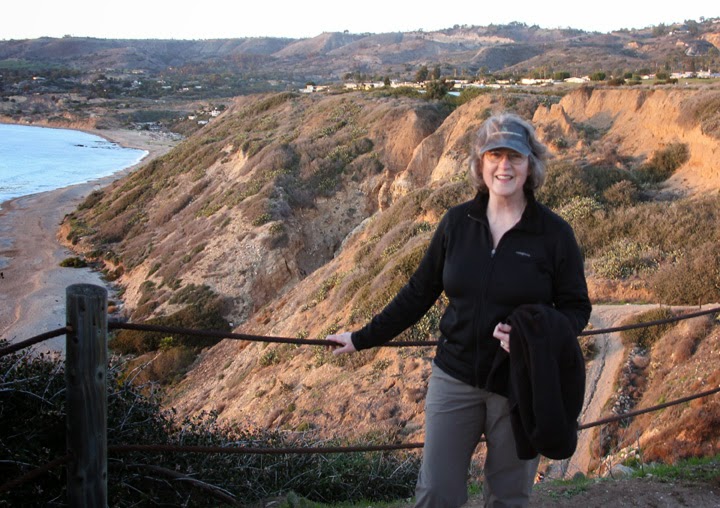
Bird-banding at Seven Islands State Birding Park--2014
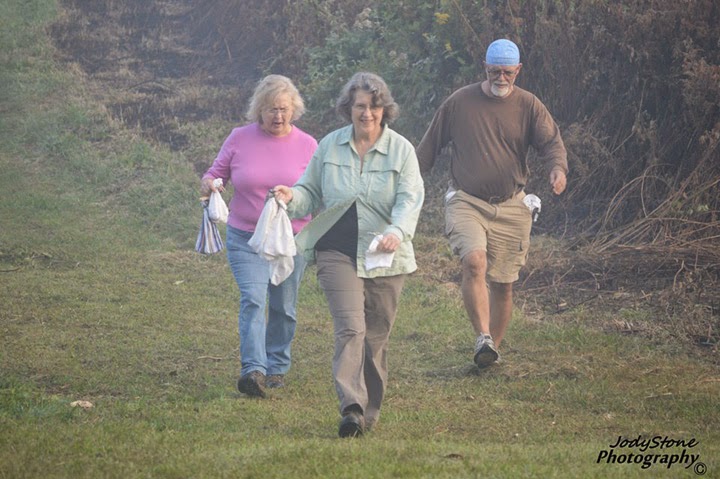
Photo courtesy of Jody Stone
Bird-banding at Seven Islands
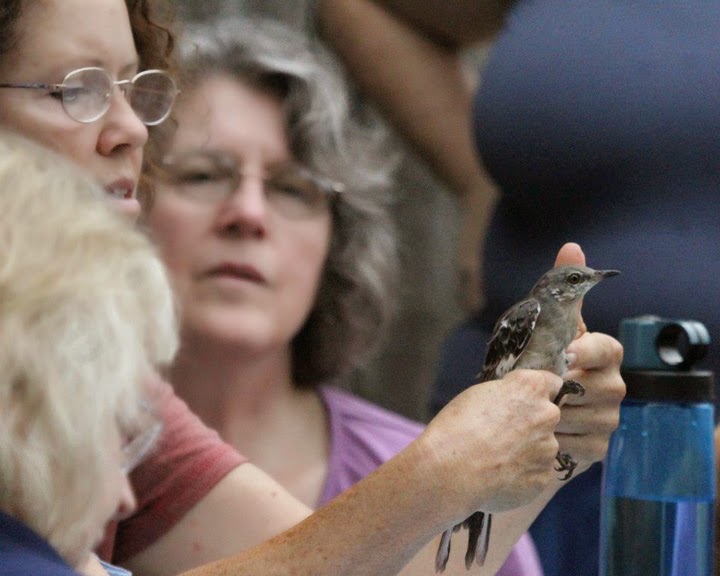
Photo courtesy of Karen Wilkenson
Enjoying Gray Jays in Churchill!--2014

Photo courtesy of Blue Sky Expeditions
Smithsonian National Zoo with one of my Whooping Crane banners and son, John--2014

The Incredible Muir Woods near Stinson Beach, CA--2014

Photo courtesy of Wendy Pitts Reeves
Me and Denali--2012
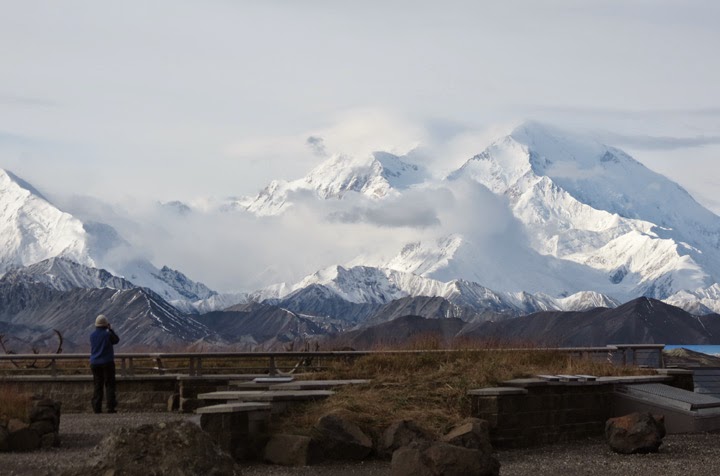
Photo courtesy of Bob King
For the Love of It...
...the sage sees heaven reflected in Nature as in a mirror, and he pursues this Art, not for the sake of gold or silver, but for the love of the knowledge which it reveals.
Sendivogius (1750)
Sendivogius (1750)
Your Uncapped Creativity...
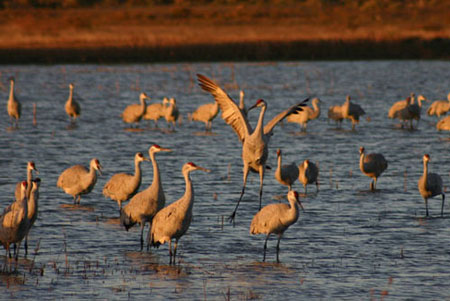
"There is a vitality, a life force, an energy, a quickening that is translated through you into action; and because there is only one of you in all time, this expression is unique. If you block it, it will never exist through any other medium and it will be lost. The world will not have it. You must keep that channel open. It is not for you to determine how good it is, nor how valuable. Nor how it compares with other expressions. It is for you to keep it yours, clearly and directly." ----the great dancer, Martha Graham





































